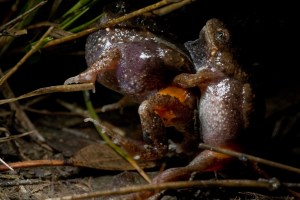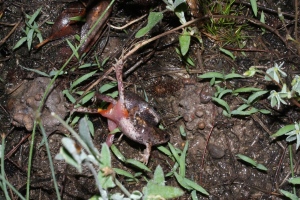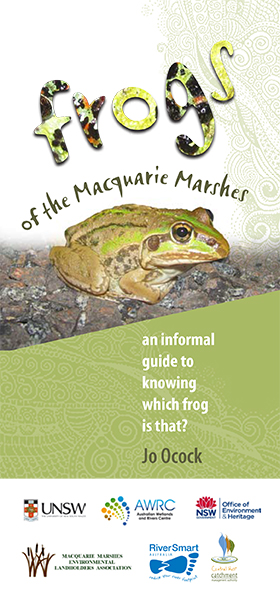I have a soft spot for uperoleias. Uperoleia is a genus of Australia frogs, which tend to be small, warty and generally unregarded. But I think they’re pretty fantastic.
There are a large number of uperoleia species, distributed throughout temperate, tropical and arid regions of Australia. They’ve had a rather complicated time with the distinction between different species being obscured by the physical similarity and small size of most of the frogs in the genus. That, and the remote location of most of them made getting the data to do comprehensive research rather difficult. It wasn’t until some rather detailed genetic work was recently completed that there was some certainty about which species was what and how many there were. Turns out quite a few – at least 28 species at last count, with most of them stomping about in the monsoonal areas of northern Australia (Catullo 2014 Zootaxa 3753 (3): 251–262).
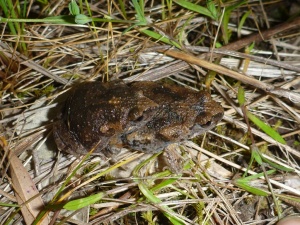
I’ve been chasing Uperoleia laviegata around a bit recently, called the smooth toadlet. They have started calling around the wetlands at the CSU campus in Albury. Interesting wee fellows, as like most of the males in this genus they are calling from the long grass quite a way from the pond itself. The females pick the males they like the sound of and they make their way toward the water, which is where I found these guys.
The species I’m most familiar with from my fieldwork in the Macquarie Marshes is Uperoleia rugosa, the wrinkled toadlet. And here are three reasons why I think they’re just the best.
- They have orange butts. OK, it’s more like orange pockets between the thigh and groin, but there is nothing more lovely than something that looks a bit drab and brown, flashing bright orange when it walks.
- One of my fondest memory while living in the Marshes is grabbing a handful of these uperoleia from the lawn one rainy night, and showing them to the landholder, who despite living out there his whole life, had never see them before.
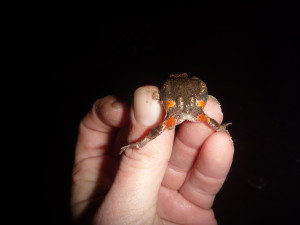
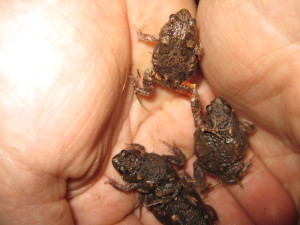
- They fight! The males are territorial and will engage in wrestling bouts with other males they deem get too close. Not unusual behaviour for frogs, but not very common either (see these papers by Robertson, Given, and Duellman). They seem to be defending a calling site, as the territories are not where the eggs are laid or contain other resources. Basically, they reckon they’ve found the best calling spot and they’ll fight to keep others away from it. It’s hilarious, watching something the size of half my thumb get all huffy, hop about, grab another male by the waist and flip him. And if that move didn’t solve the matter, they’ll keep doing it until it did. It definitely made for a great entertainment one night in the Macquarie Marshes when after nearly 50 mm of rain fell, there were hundreds out, calling away and occasionally indulging in a spot of frog sumo (for the full story, read my short write-up on page 472: Ocock 2012 Herpetological Review 43(3): 472).
